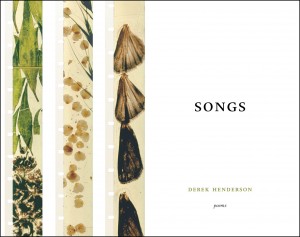By Abigail Kerstetter, Colorado Review Associate Editor
As a poet, one of the things I find myself agonizing over most in my own work is the physical arrangement of the words on the page—the need to insert silence, or to hurry the reader along; to make connections, or to instruct the reader how the poem should be read. Just as often, I arrange my poems according to a visceral reaction (call it aesthetic) to an initial visual intake, a desire for a certain visual arrangement regardless of how much sense it makes in relation to the meaning of the words—and regardless, too, of such practical considerations of how a journal or publisher might reproduce such arrangements.
Perhaps this anxiety is rooted in my origins as a fiction writer, where the visual arrangement of the words was already more or less determined. As a poet, it seems one can get away with just about anything, so long as one can provide a reason. (And sometimes even this is not required.)
My recent experience typesetting Songs, by Derek Henderson, for the Mountain West Poetry Series at the Center for Literary Publishing, and my continued work reading, copyediting, and proofreading poems for Colorado Review have given me a new perspective on how I arrange my own poems on the page. It has made me more aware of the physical realities not only of my poems, but the medium in which I hope they might appear and be read. I write because I am compelled. I write to discover. While I do not think publication should be the ultimate driving force behind the act of writing poetry, I’d be lying if I said I don’t still hope to share these discoveries with readers beyond indulging friends and family.
Similarly, I am loathe to say one should restrain one’s creative expression to fit such pragmatic demands as a magazine’s physical dimensions—choices that may be practical, economical, whimsical, or perfectly reasonable. But I’ve come to regard the role of the literary journal as both curator and champion. The literary journal provides a medium through which writers’ work can engage with a larger audience. It is a voice for a frequently silent and solitary art. It provides a community. To participate in that community necessitates a bit of give and take on both sides.
While here at Colorado Review we certainly don’t disregard poems because of their format, some poems require us to work with the poet to find a way to meet the practical demands of the journal—namely, its physical dimensions—without losing the essence of the poem, what first moved us to publish it.
 I regard my experience with Songs as a model of how such a relationship ideally functions. It was clear from the outset that this book—composed of poems shaped in the 4:3 aspect ratio of 8 mm film—required a particular trim size, which we were happy to accommodate. As the typesetter, I was challenged to find creative solutions to ensure quality and clarity while respecting the author’s wishes. As a poet, the experience additionally made me look closer at my own work, the journals I submit to, and the formatting decisions I make, and how those decisions affect meaning in and reception of my poetry. It called my attention as a writer away from the immediate screen or sheet of paper before me. It widened my perspective.
I regard my experience with Songs as a model of how such a relationship ideally functions. It was clear from the outset that this book—composed of poems shaped in the 4:3 aspect ratio of 8 mm film—required a particular trim size, which we were happy to accommodate. As the typesetter, I was challenged to find creative solutions to ensure quality and clarity while respecting the author’s wishes. As a poet, the experience additionally made me look closer at my own work, the journals I submit to, and the formatting decisions I make, and how those decisions affect meaning in and reception of my poetry. It called my attention as a writer away from the immediate screen or sheet of paper before me. It widened my perspective.
Writing may be a solitary art, but publishing is a collaborative endeavor, and one I’m proud to participate in. As a writer, the lessons I’ve learned in publishing remind me daily why I left my temp job in New York and moved halfway across the country to pursue something as frivolous as poetry. As a reader, I will continue to consider the poems submitted to Colorado Review first and foremost for the words and feeling of the poems—for their essence—and welcome what challenges come in sharing these poems with our readers. And in this way, we share poems.